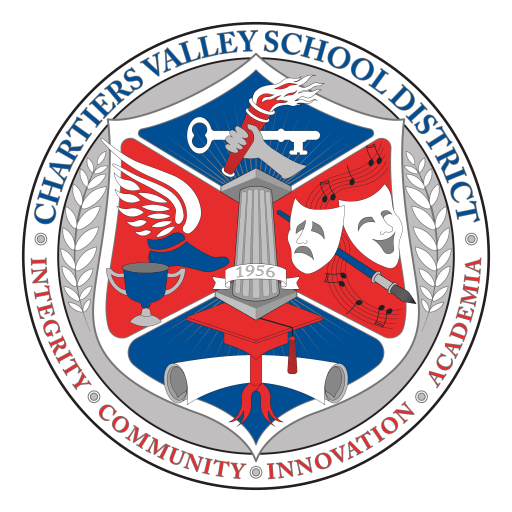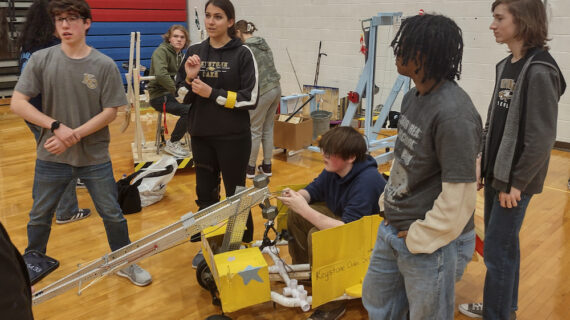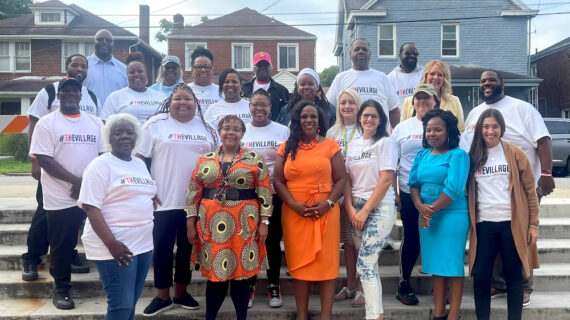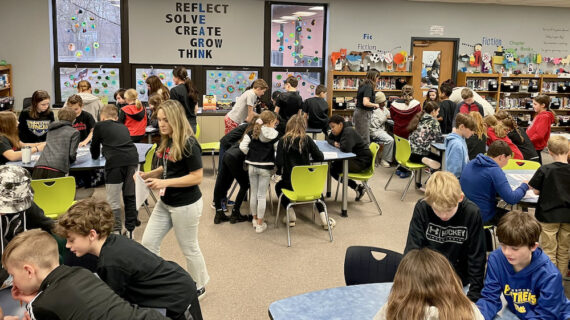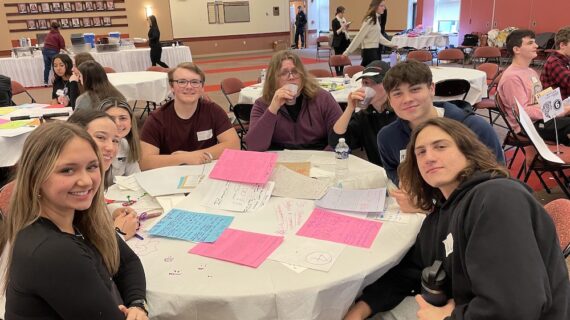
The curriculum revision never ends at Chartiers Valley, and the students are better for it
This story is one in a series created in collaboration with the AASA Learning 2025 Alliance to celebrate the work of groundbreaking school districts in the Pittsburgh region. Kidsburgh will share these stories throughout 2024. (Photo above Photo by Glenn Carstens-Peters via Unsplash.)
No matter when you read this story, you can trust that Chartiers Valley School District fifth grade teacher Justin Leidy will be deep in the middle of rewriting and refining the curriculum he teaches. Spring, summer, fall, winter. Curriculum development is a never-ending process, and that’s just the way Leidy likes it.
Leidy knows folks outside the world of education may find this surprising.
“The common misunderstanding is once you become a teacher, you do the same thing for 50 years. And maybe that does happen elsewhere,” he says. “I want to make sure it doesn’t happen here — that we never, ever get stuck doing the same thing year after year.”
In Leidy’s classroom at Chartiers Valley Intermediate School and throughout this school district southwest of Pittsburgh, teachers are constantly collecting data on what’s working and what isn’t.
As the district moves through its six-year cycle of assessing, innovating, implementing, and re-adjusting the materials and methods they use to teach their community’s kids, they keep building toward better outcomes.
Leidy admits it’s a lot of work. But Chartiers Valley’s approach — a data-driven process of tracking how students are growing and continually revising curriculum to help them thrive — is yielding powerful results.
The district is part of the Western Pennsylvania Learning 2025 Alliance, a regional cohort of school districts working together — with support from The Grable Foundation — to create student-centered, equity-focused, future-driven schools. Led by local superintendents and AASA, The School Superintendents Association, the Alliance convenes to help districts like Chartiers Valley innovate in ways that help every child reach their potential.
To Leidy, nothing could be more important. Even if that means continually revising curriculum.
“It’s a lot of work, but anything with value in life is a lot of work and effort,” he says. “If we really want to deliver the best instruction possible and meet the kids where they are, curriculum and instruction needs to be a fluid process. It can’t be something that is chiseled in stone and becomes static for X number of years.”
NEVER ENDING, BUT MEASURABLY MEANINGFUL
“The process of improving and updating curriculum really never ends, and so it’s also a little overwhelming,” says Assistant Superintendent Julie Franczyk. She manages to make the word “overwhelming” sound like a positive thing.
To make their complex system run smoothly, Franczyk and her team track everything in a chart that looks at all departments at every grade level throughout the district. And the work is done in stages, so it’s not too time-consuming for the teachers (who are, in fairness, busy teaching) and so the district can plan ahead to fund new ideas.
For example, over the course of one school year, all the teachers in the intermediate building will do a “needs assessment” about social studies: What are we currently teaching? What resources do we have? What does the latest research say are the best practices?
And they ask parents: What do you want to see your kids learning?
“When I was in school, it was about memorizing,” Franczyk says. “Now, it might be more about problem-solving and how I work together with a team, and how I use that information and apply it to real-world experiences.”
They survey teachers and students, too. With all that data in hand, a curriculum committee that includes teachers then spends a chunk of the summer asking: What is currently working and what needs to change?
When August arrives, they take that new curriculum and implement it, evaluating the changes as the months pass and planning further revisions for the following year.
The key to all of this, says Leidy, is a willingness to embrace change — and even failure.
Constantly revising, he says, means saying, “Hey, doing this unit this way at this time just didn’t work. So what can we do to change it so that we can deliver this unit better next year?”
He also believes in the power of pre-testing.
“Before every language arts unit, we give a pretest. We score that pretest, then analyze the data so we can determine what the kid’s weaknesses and strengths are throughout,” Leidy says. “Then we design, on the fly, small-group instruction to meet their individualized needs.”
This approach “has created so much growth,” he says, especially for the district’s growing community of immigrant and refugee kids.
Recently, twin brothers from a Middle Eastern country arrived at Chartiers Valley. As they began to learn English, they struggled mightily with something called “text-dependent analysis,” or TDA, a key part of mandatory state exams.
Students must read an essay and write a detailed response. Last fall, these boys were overwhelmed and frightened by this task. But with Leidy tracking their progress and fine-tuning instruction along the way, progress bloomed.
“Now, both of those kids are on their way to writing these TDAs independently and one of them has been pulled out of a special needs class and is now with me full time,” Leidy says. “His pride in himself is heartwarming, and I couldn’t be more proud of him. Because despite tears and stress and anxiety, he stuck with me.”
Those are the moments that make Franczyk a believer in the never-ending, sometimes exhausting odyssey that is the curriculum process at Chartiers Valley.
“Our population is constantly changing,” she says. “They’re coming from literally all over the world — some with formalized levels of education and some who have never set foot in a school before. But just because you’ve never set foot in a school before doesn’t mean you can’t succeed as a learner.”
Want to download this story? Click here for a PDF.
